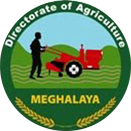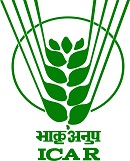News & Events
- Frontline Demonstrations
- On Farm Trials
- TRAINING CONDUCTED
- Vaccination Camp for Cattle against Foot & Mouth Disease (FMD)
- Celebration of International Women Day's 2019 by the KVK Jaintia Hills
- World Soil Health Day 2015.
- News Letter for the year 2013 - Vol. 4
- News letter for the year 2017 - Vol.7
- Major Problems Identified & Priority Thrust Areas
- Agro Climatic Zones
- Major Ecological Situations
- Major Farming Systems / Enterprises
- Training Programmes
- Other Extension Activities
- Literatures developed & Published
- West Jaintia Hills District Profile
- Resource Inventory of the District
Publication
- "Ka Dawai Bordeaux Mixture bad ka jingpyndonkam ia ka."
- Katto katne shaphang ki Dawai Bio pesticides Bad ka rukom pyndonkam ia ki.
- "Ka jingpang pyut ha u Sying bad ki lad ban iada ia ka."
- Ka Kalendar ia kiba Ri Dohkha.
- Ki Lad Jingiada na ki khniang bad ki jingpang ha u Kba.
- Ki Biofertilizers.
- Ka Rukom sara jhur.
- Ki Jingkylli ba iadei bad ka rep Tit Oyster.
- Ki Ain Iada Jingthung.
- Ki Symbai Tynrai.
- U Niang Byrnai.
Latest Activities
- Celebration of Mahila Kisan Divas by the KVK Jaintia Hills
- Training for the month of February 2018.
- Training for the month of January 2018.
- On farm Trials
- Front Line Demonstration
- Training Achievements.
Related Links
- Meghalaya Agriculture Portal
- ICAR Zone III Portal
- Indian Council of Agriculture Research
- Meghalaya Agricultural Portal
- Meghalaya Marketing Portal
- Meghalaya Portal
- KVK Ribhoi
- KVK West Khasi Hills
- KVK West Garo Hills
- India Portal
Last Updated on 26-06-2020
West Jaiñtia Hills District Profile
West Jaintia Hills District one of the eleven Districts of the State of Meghalaya and is located in the eastern most part of the state. It is the home of one of the major tribes of Meghalaya popularly known as “the Jaintias “or the “Pnars” and other sub-tribes like the “Wars”, the “Bhois” and the “Biates”. It is the second largest district in the state in terms of area. It was created on 31st July, 2012 by the bifurcation of the erstwhile Jaintia Hills district into East and West Jaintia Hills Districts.
Before its conquest and annexation by the British, Jaintia Hills was regarded as a kingdom under the rule of the Jaintia Kings. It comprised the vast hilly tracts of areas under the dominion of the traditional chiefs known as “Daloi” and often referred in the local parlance as“Ka Ri Khadar Dalloi” or “The Kingdom of twelve chieftains” and also lowlands in the Assam valley and Surma Valley(now in Bangladesh) which were under the direct supervision of the “Syiem” or”Rajah”.
With the annexation, this kingdom was fragmented and its status was reduced to a mere sub-division to form part of the district known as United Khasi and Jaintia Hills. After independence and with the implementation of the Constitution of India in 1950, a number of District Councils were created in the State of erstwhile Assam carving out areas from the then Jaintia Hills. Thus we find the area under Jaintia Hills District which originally was 5462 sq. kms was reduced to 3819 sq.kms.
Jowai is the head quarter of West Jaintia hills District and is the host of all the heads of important governmental offices and establishments, educational institutions, hospital, banking institutions etc. There is 1(one) Civil Sub-divisions viz., Amlarem Sub-division and 3(three) community and rural development blocks viz., Thadlaskeiñ,Laskeiñ, and Amlarem blocks in the district.The general profile of the district can be seen in table1.
GENERAL PROFILE OF THE DISTRICT
| Sl. No. | Title | Units |
|---|---|---|
| 1. | Total geographic area | 1693 sq. Km |
| 2. | Total Population | 2,70,352(2001 census) |
| 3. | Male | 1,34,406 |
| 4. | Female | 1,35,946 |
| 5. | Rural Population | - |
| 6. | Urban Population | 28,420 |
| 7. | Population density | 159.69 per Sq.Km |
| 8. | Literacy % | 63.23% |
| 9. | Male | 59.75% |
| 10. | Female | 66.71% |
| 11. | No of towns | 1 |
| 12. | No. of Sub-divisions | 1 |
| 13. | No of Blocks | 3 |
| 14. | No of Villages | 293 |
| 15. | No. of households | 34,401 |
| 16. | No. of Banks | - |
| 17. | No of Assembly constituencies | 5 |








